Nitin Singhania Summary: Indian Sculpture and Pottery | History for UPSC CSE PDF Download
| Table of contents |

|
| Features of South Indian Temple Sculptures |

|
| Chola Sculpture |

|
| Indian Bronze Sculpture |

|
| Post- Independence Sculptures |

|
Features of South Indian Temple Sculptures
Encompassing sculptures from various dynasties like Chalukyas, Pallavas, Pandyas, and Cholas.
Kirtimukha
- Kirtimukha, a monstrous face with large fangs, is a common decorative motif in South Indian temple architecture.
- Frequently observed in Hindu temple architecture in India, Southeast Asia, and Buddhist architecture.
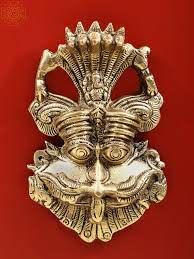
Musical Sculptures
- Granite architectural elements featuring sculptures with musical instruments are a distinctive aspect of South Indian temples.
- Most commonly found in Tamil Nadu, with one of the earliest examples recovered from Kodumbalur.
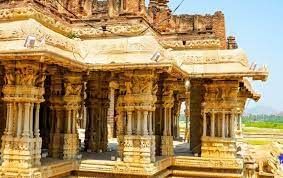
- The Vittala Temple in Hampi, known for its Musical Pillars (SaReGaMa pillars), represents another unique instance.
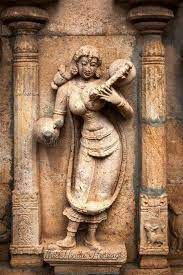
Saptamatrika Sculptures
- 'Saptamatrika Sculptures' are a distinctive feature in South Indian temples, representing shaktis of Hindu deities like Brahma, Vishnu, and Mahesvara.
- One of the oldest depictions can be found in the Kailasanatha temple in Kanchipuram.
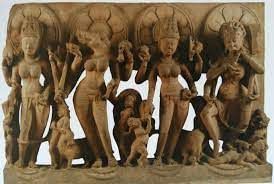
Other Features
South Indian temple sculpture features frequent use of animal and bird motifs. Depictions include elephants and snakes, along with motifs like swans in Pallava temples and Yali motif sculptures (Yali being a mythological creature with the head and body of a lion and the trunk and tusks of an elephant).
Chola Sculpture
Chola temples were characterized by a significant emphasis on decoration through sculptures. An iconic Chola sculpture was the depiction of Nataraja in the Tandava dance posture.
- While the earliest known Nataraja sculpture, found at Ravana Phadi Cave in Aihole, dates back to the early Chalukya rule, its peak expression was achieved under the Cholas.
Features of the Nataraja Sculpture
- The upper right hand holds a drum, symbolizing the sound of creation, as all creations emerge from the sound of the damru.
- The upper left hand holds the eternal fire, representing destruction, a necessary counterpart to creation.
- The lower right hand is in the gesture of abhaya mudra, signifying benediction and reassuring devotees not to be afraid.
- The lower left hand points towards the upraised foot, indicating the path of salvation.
- The left leg in bhujangatrasita stance symbolizes tirobhava, kicking away the veil of maya or illusion from the devotee's mind.
- Shiva dances on a small dwarf figure, symbolizing ignorance and the ego of an individual.
- The matted and flowing locks of Shiva represent the flow of the River Ganges.
- In ornamentation, one ear of Shiva has a male earring, while the other has a female one, symbolizing the fusion of male and female, known as Ardhanarishvara.
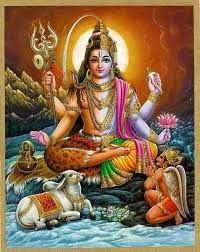
- A snake is twisted around the arm of Shiva, symbolizing the kundalini power residing in the human spine in a dormant stage.
- The Nataraja is surrounded by a nimbus of glowing lights, symbolizing the vast unending cycles of time.

Indian Bronze Sculpture
- Bronze sculptures created with the lost wax technique were widespread in India since ancient times.
- Excavations across various regions in India, dating from the second century onwards, have revealed bronze sculptures featuring Buddhist, Hindu, and Jain icons.
- The 'Dancing Girl' from Mohenjodaro, dated around 2500 BCE, is one of the earliest bronze sculptures in the Indian subcontinent.
- Another notable example is the Bronze Chariot excavated at Daimabad, dating back to about 1500 BCE.
- A bronze hoard found in Akota suggests a prevalent bronze casting practice in Gujarat or western India between the 6th and 9th centuries.

Jain Bronze Sculptures
- Famous Jain bronze sculptures were discovered in Chausa (Bihar), Hansi (Haryana), and various places in Tamil Nadu.
- Many standing Buddha images with abhaya mudra were found in Uttar Pradesh and Bihar, mainly from the Gupta and post-Gupta periods.
- Amaravati style Vakataka bronze images of Buddha were discovered in Phophnar, Maharashtra, contemporary with Gupta period bronze sculptures.
- Bronze images of Hindu and Buddhist deities were excavated from the Kashmir region.
Evolution of Iconography
- The growth of Vishnu iconography included the discovery of the Four-headed Vishnu - Chaturanana or Vaikuntha Vishnu from different regions.
- The Pallava period (8th century) produced numerous bronze sculptures, including the icon of Shiva seated in ardhaparyanka asana.
- Thanjavur region in Tamil Nadu witnessed a diverse range of Shiva iconography. The Nataraja murti of the Chola period and the kalyanasundara murti of the 9th century are notable examples.
- During the Vijayanagar period (16th century) in Andhra Pradesh, experimentation with royal patronage led to the creation of standing portrait statues of Krishnadevaraya with his two queens in bronze in Tirupati.
Mughal Period
During the Mughal period, Islamic rulers did not focus on producing figurative sculptures. However, under the reigns of Akbar, Jahangir, and Shah Jahan, there was a notable interest in architecture and sculpture.
Artistic Developments
- Akbar took initiatives to promote art and sculpture, continuing the tradition set by Jahangir and Shah Jahan.
- He invited guilds (salats) of indigenous artisans to experiment in art, leading to the development of a unified artistic style in India.
Artistic Motifs and Commissions:
- Animate motifs, carved in red sandstone, are evident in the monuments at Agra and Fatehpur Sikri.
- Akbar commissioned statues of Jai Mal and Fatha, Rajput heroes of Chittor.
- Beautiful stone elephant mouths were carved in the Delhi gate of the Agra Fort.

Exemplary Sculptures
- Akbar's tomb, constructed in Sikandra between 1605-1613 by Jahangir, stands as an exquisite example of Mughal sculpture.
- Hindu motifs like svastika, srivatsa, lotus, etc., are incorporated in the Mayura Mandapa or the Peacock Hall of the Agra Fort.
- During the time of Shah Jahan, mini-monuments made of marble, intricate jalis, and miniature animal sculptures became prominent.
Post- Independence Sculptures
After Independence, innovative techniques in sculpture and various art movements continued to flourish. Some of the most noted sculptors post-1947 include:
- Ramkinkar Baij: A pioneer sculptor and painter, associated with the Santiniketan School of Art. Notable works include the Santal Family in Santiniketan and the Yaksha and Yakshi sculptures at the Reserve Bank of India, New Delhi.
- Pilloo Pochkhanawala: An eminent woman sculptor who played a crucial role in transforming the Sir Cowasji Jehangir Hall into the National Gallery of Modern Art, Mumbai. Notable public sculptures include 'Spark' at the old Haji Ali Circle in Mumbai and 'Stone Age to Space' at the Nehru Centre.
- Mrinalini Mukherjee: A renowned sculptor known for her innovative works.
- Sankho Chaudhuri: A notable sculptor contributing to the post-Independence art scene.
- Chintamoni Kar: A prominent sculptor known for his contributions to Indian art.

Contextual Modernism and Bengal School of Art
Contextual Modernism was further advocated by artists from the Bengal School of Art, including Nandalal Bose, Ramkinker Baij, and Benode Behari Mukherjee.
Devi Prasad Roy Choudhury (1899-1975): An eminent Indian sculptor renowned for his monumental bronze sculptures - 'The Triumph of Labour' in Chennai and the 'Martyrs’ Memorial' in Patna.
Tallest Statues in India
- Statue of Unity: The world's tallest statue, standing at 182 meters. Located near Kevadia in Gujarat, it depicts Vallabhbhai Patel and was designed by sculptor Ram V. Sutar. Inaugurated on October 31, 2018, on the 143rd birth anniversary of Sardar Patel.
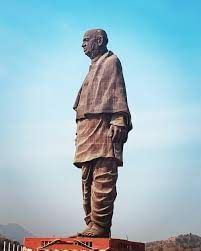
- Statue of Belief (Vishwas Swaroopam): The tallest statue of Lord Shiva in the world, situated in Nathdwara, Rajasthan. Designed by Murtikar Naresh Kumawat, it was inaugurated on October 29, 2022.

- Statue of Equality: A statue of Ramanuja and Harsa (11th-century philosopher) located in Hyderabad. Opened in 2022.

- Statue of Prosperity: The statue of the founder of Bangalore, Nadaprabhu Kempe Gowda (1510 - 1569). Opened in 2022.
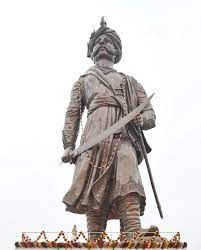
- Statue of Ahimsa: Located in Nasik, it is the tallest Jain statue globally, depicting the first Jain Tirthankara, Rishabhanatha. Completed in 2016.
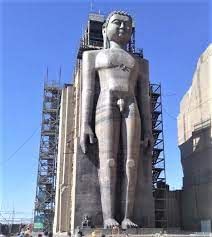
|
226 videos|855 docs|219 tests
|
FAQs on Nitin Singhania Summary: Indian Sculpture and Pottery - History for UPSC CSE
| 1. What are the main features of South Indian temple sculptures? |  |
| 2. What distinguishes Chola sculptures from other South Indian temple sculptures? |  |
| 3. What are the characteristics of Indian bronze sculptures? |  |
| 4. How have post-independence sculptures in India evolved? |  |
| 5. How is Indian sculpture and pottery relevant for the UPSC exam? |  |















